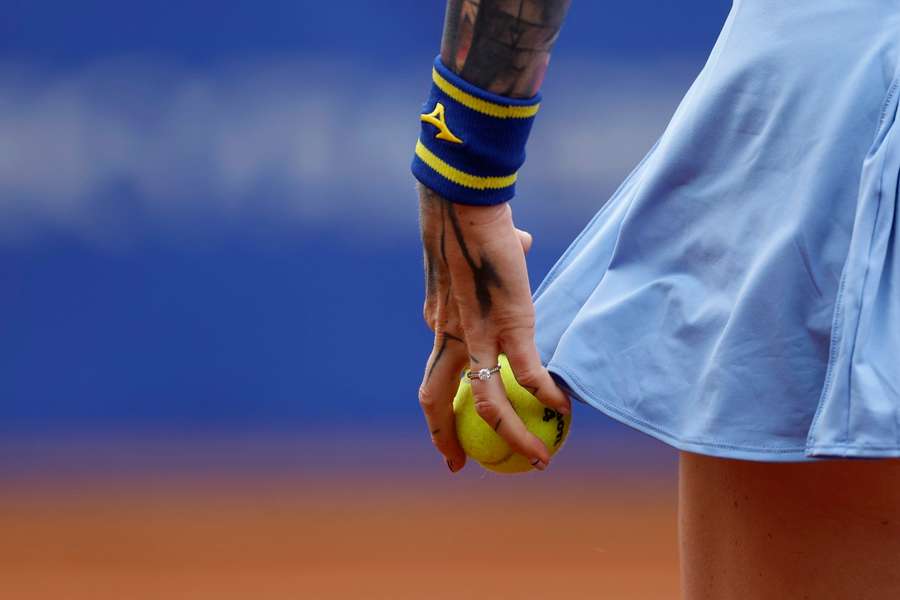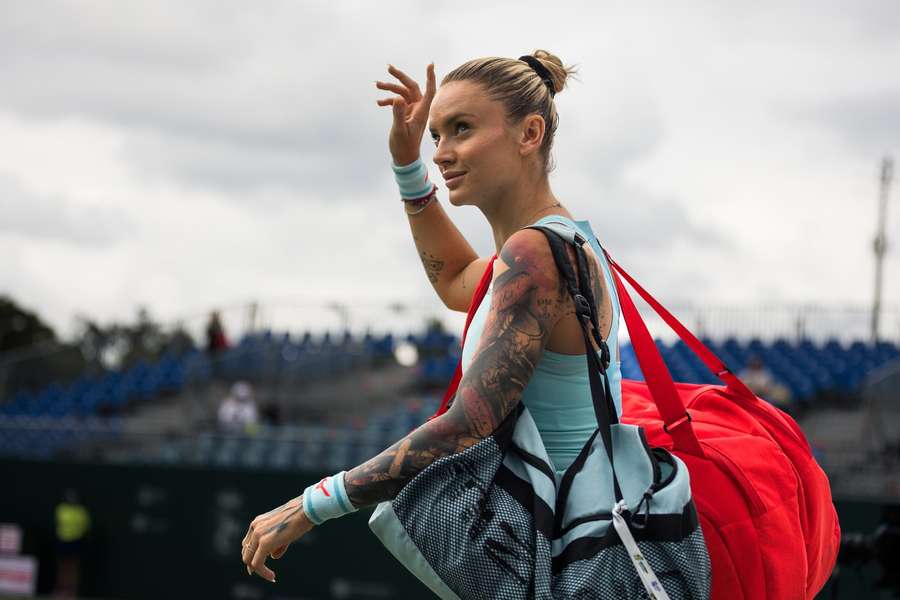WTA Tour: Teresa Martincova when she returned to court after eight months out
Czecheke Tennis Theresa Martincova has returned to the tour circuit after eight months out of action. In this exclusive interview with flashscore, she talks about how much her tennis life has changed, her desire to return to the competitive tennis and the conditions in the WTA tournament for players.
Earlier, Marincova There is somehow talk of a tennis rebellious, perhaps because of her distinctive tattoos or her sincere words. In its days of Glory, at the beginning of 2022, Prague’s 30-year-old locally also ranked 40th in WTA rankings. She defeated Samantha Stur and Jelena Ostrapenko’s likes.
Martincova played her first matches after a break of about eight months in mid -March, but she is still looking for confidence and the right pace. She has a negative 4-6 record this season, but she says she’s not giving up.
In this interview with the former player Terezzzi KateřinaIt discusses in great detail how life is like for a tennis tenist during unsafe times.
In its return to action
“I have to say that the beginning was a little hasty because it was thrown into the matches based on the fact that I started training. I had a great point of calling from doctors and physios, saying they didn’t think it was a good idea. They are experienced, of course, so it was confirmed.
“I went out for the first two tours, and it turned out that my foot was really not ready. There was a new position, and I had more or less two bones knocking against each other. I got bone edema.
“I had to stop again for three or four weeks. They told me it could have been up to three months. I’m bored in this regard. In training, you are still some sort seeing your move, but in a match, you are in a different mental frame. I should have waited longer.”
Changes in its team
“The physics is a big factor for me now. I was never fully in love with him. Now I absolutely can’t do without a physiotherapist. I don’t want to say strictly in the tour, but generally in preparation. This is a big difference to me.”
Changes in its daily routine
“I have to say it (its routine) has changed completely. I always need to train a lot. But now we’re going to the scene where I can’t train so much with that foot.
“I had to cut in court and grow back to something completely different, in special exercises because I absolutely couldn’t do without it. It is new to me.”
Changes in its technique
“I had a big wrist problem (a year ago – the editor’s marking). In this case, I changed wires, which luckily helped me because I was facing operations.
“But with my leg, I felt the opposite. I had to be careful not to change the technique. After all.
“My style of tennis is that I have to go more with my body because I don’t have enough arm strength to play it with my arm alone.”

In returning to the tournament
“I have to say it was a comeback, but more like it still. It is challenging because I have never done so long. Plus, after surgery, which was initially supposed to be easier. It is a great unknown to me, and I am still learning how I can work with it. Something something I was not known
“I have to admit it a little, because it’s not about going to a tour now and get used to my game. It is all about the damage. Where it allows me to go, where it doesn’t let me go, what hurts me, what doesn’t hurt me.
“I am on stage now that I have to take my foot to last longer. I find that the more games I play, the worse it may.
The psychological effects of a long break
“I think I even need to turn off tennis because I was in it for a long time. That helped me. I can’t say I was in a kind of depression, I couldn’t play tennis. I believed I could do it. I was sure we could do it because I had a great team around me.
“I built it with the baby’s steps. This approach helped me. On the other hand, I was told I was far ahead. And that I also got into court quite early.”
Not working with a psychologist
“I don’t work with a psychologist. I have a good team of people around me. That’s all coaches. For example, my fitness coach (Michal Mirajovsky – Ed.). We did the hardest job after surgery together. He is like a psychologist for me.
“My family and my background helped me a lot. In this regard, I really didn’t feel the need to talk to anyone.”
The period of uncertainty
“I really don’t know anything now. I don’t know if I’m going to a tour next week. What tour I am going to play, where will I go, or how will they go.
“After the TRNAVA, for example, I don’t know if it would hurt more every day or if it would get better. I already have an experience, so I’m trying to create a program. It is to see and make decisions in the last minute, return to the beginning.”
Changes in WTA District
“I’ve been out of it for a while now, but there have been a lot of conversations about the balls. The older I get, the more I notice.
“Otherwise, they are trying to improve the conditions for players so that they have the best possible service. Of course, it’s more or less the best for the best.
“Finances are growing because this was probably the biggest obstacle in tennis, where players are underestimated. I don’t want to look like we are not getting money, but there is a big problem with the redistribution of money from associations.
“In percentage terms, they give players very little compared to NHL, NBA and NFL. There are many fights that are happening now, and they are trying to change it.”

Over the creation of PTPA
“I was in the birth of PTPA (Tennis Professional Association, Ed.). I can say that (Novak) Gjokovic fought hard to improve the conditions for players. They gave us a great lecture on what they were planning.
“They showed us graphics and figures so that we really knew what the situation was. I was in the East and I stay in what these players are fighting for, or we are fighting, it makes sense.”
Life after her career playing
“I’m definitely I’ll want to train. I’m convinced of this. Last season has made me safe in this. In this regard, I think I’ve understood it, and it helps a person not worry about the end when it comes. Maybe I can even last much longer in tennis that way.”
Martincova’s motivation
“I like tennis very much and I want to prove to myself that I can still push myself back. The challenge motivates me. I don’t find myself getting old. When my knee starts to hurt more than it gives me, here the problem begins. And I’m not at that stage.”
Its next plans
“They differ from the tournament to the tournament. It depends on the way I’m feeling, I don’t feel, and of course, how I’m doing, not doing. It depends a lot on my knee, just to be able to tell myself if I want to play two or three tournaments I can do.
“Surgery has taught me to take everything in extra steps. I would like to go back to the biggest shifts.”